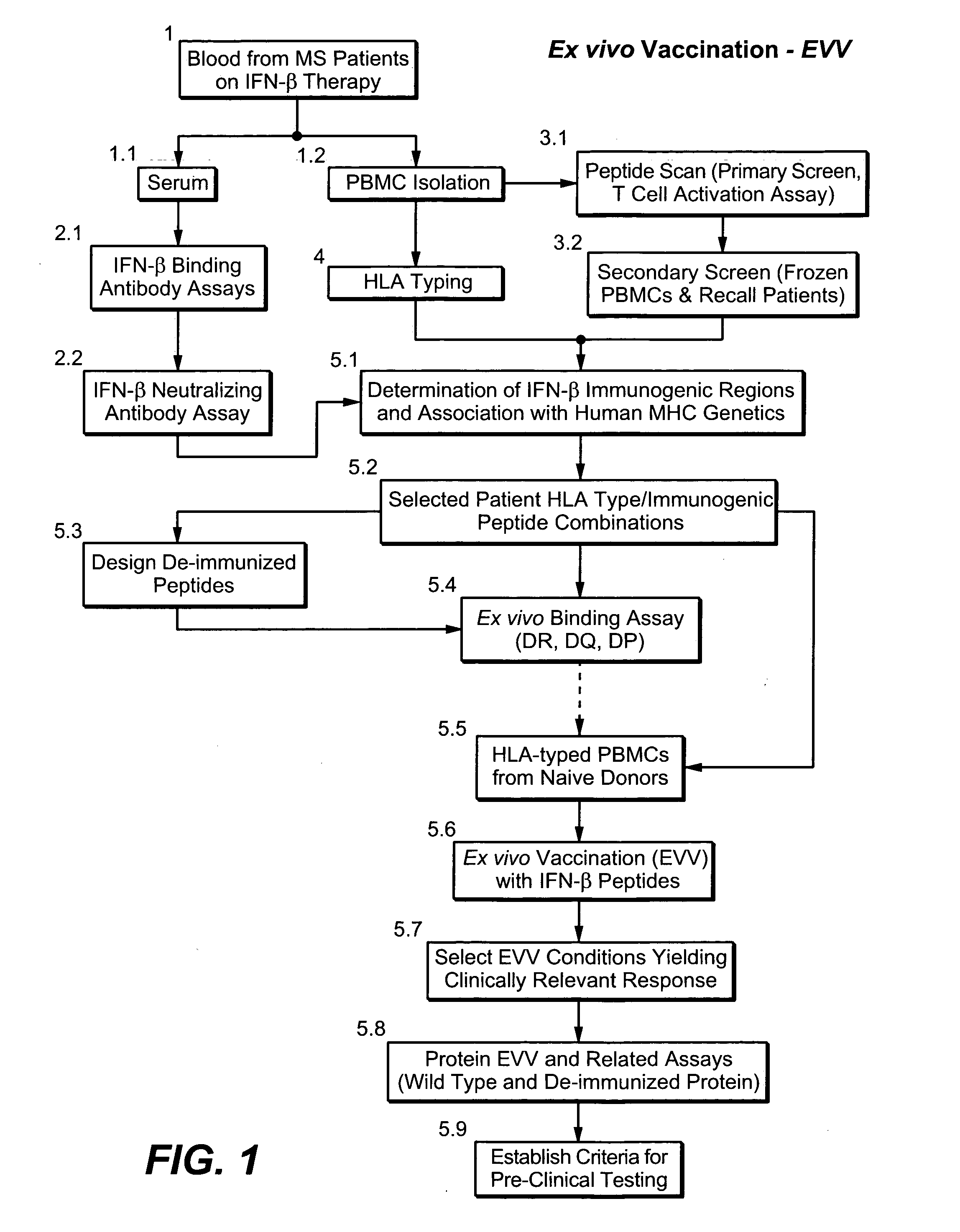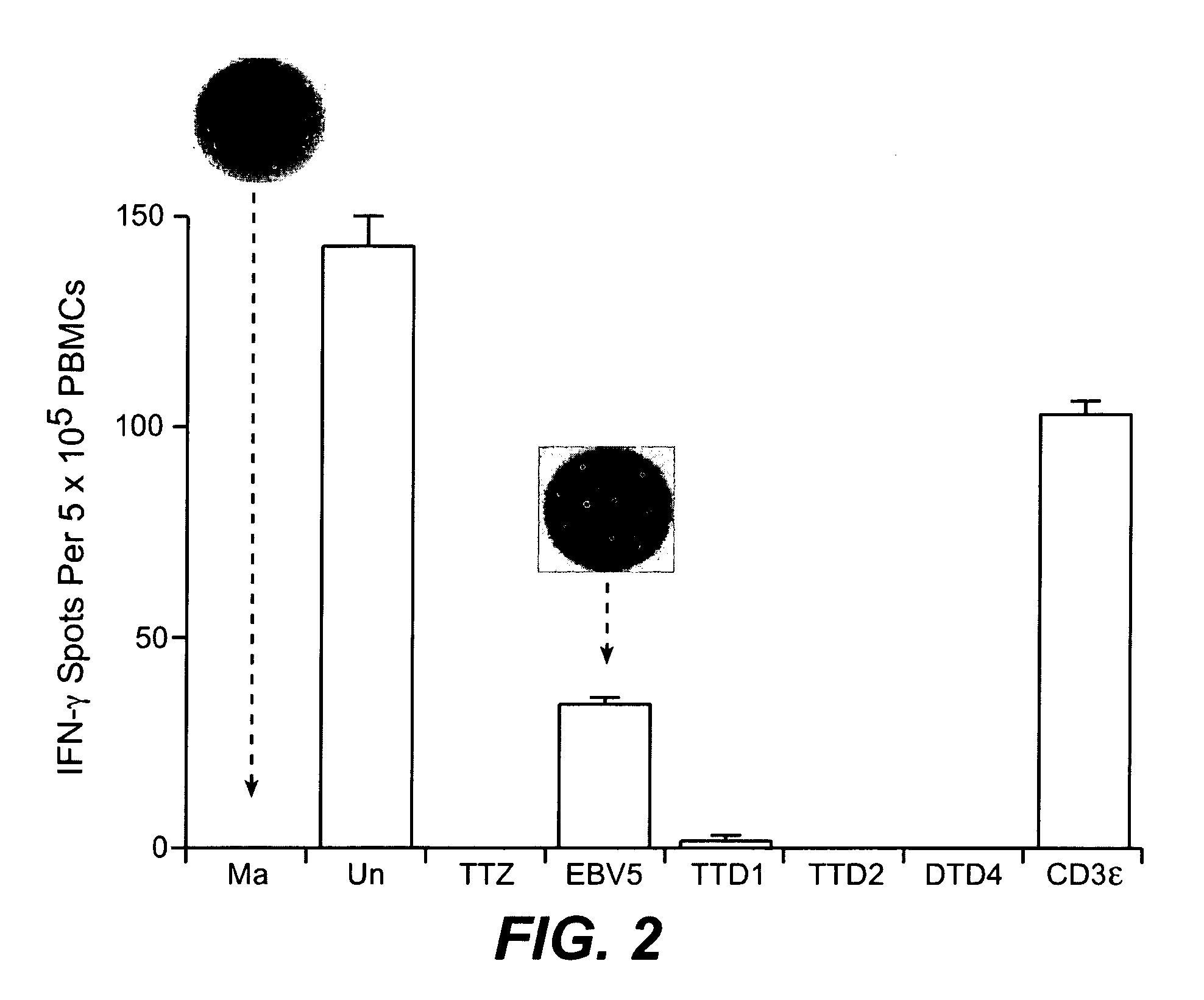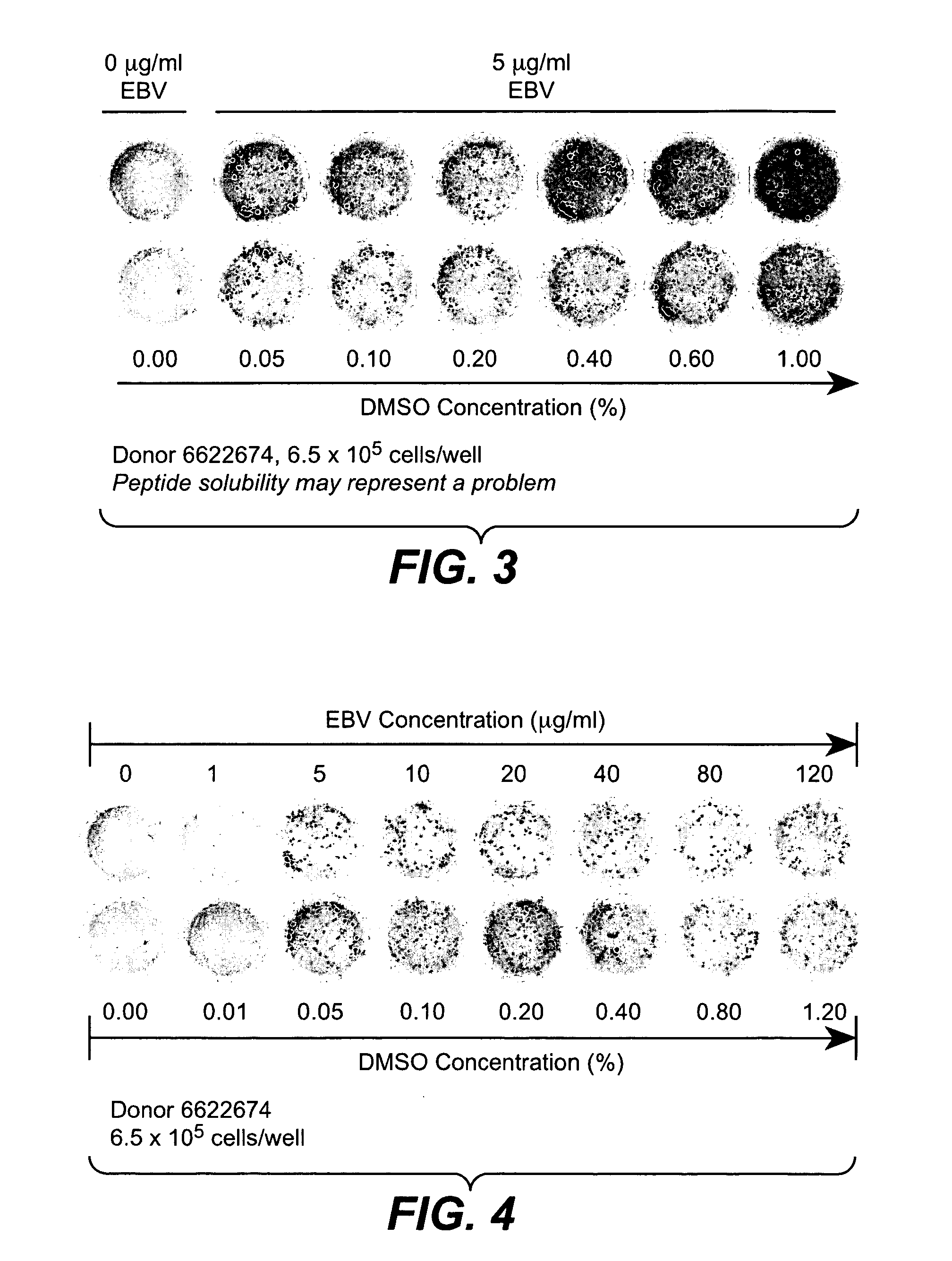Prediction and assessment of immunogenicity
- Summary
- Abstract
- Description
- Claims
- Application Information
AI Technical Summary
Benefits of technology
Problems solved by technology
Method used
Image
Examples
example 1
[0317] A broad strategy is used to: (A) identify clinically relevant MHC-binding epitopes in a target protein; (B) based on clinical evidence develop an ex vivo assay predictive of peptide and / or protein immunogenicity to humans; and, (C) design and screen protein variants with reduced immunogenicity.
[0318]FIG. 1 shows a flowchart exemplifying the above-mentioned strategy (ex vivo vaccination—EVV) utilizing interferon beta (IFN-β) as the target protein. Other therapeutic proteins eliciting an immune response can also be utilized.
[0319] In the present example, blood from patients undergoing interferon beta therapy (10) was the source of serum (11) and peripheral blood mononuclear cells (PBMC) (12). Serum was tested regarding the presence of IFN-β binding antibodies (21) and neutralizing antibodies (22). This allowed identification of patients mounting an immune response to the drug (responders; positive antibody response) or not (non-responders; no antibody detected in the serum). ...
example2
[0324] Ex vivo assays supported the implementation of a strategy for clinical validation of the association between MHC-binding epitopes and interferon-beta immunogenicity. An optimized PBMC Elispot assay allowed sensitive detection of responsive T cells. The low detection limits for the assay permitted efficient epitope mapping using samples from patients that had developed or not developed antibodies to the drug. The assay was implemented and optimized using PBMC from normal donors and subsequently validated with samples from multiple sclerosis patients. IFN-β antibody binding assay (direct capture and indirect capture ELISA) allowed sensitive detection of IgG in serum from human subjects.
[0325] T Cell Activation Assay Using PBMC
[0326] The peripheral blood mononuclear cells (PBMC) are isolated from blood or lymphapheresis products using Ficoll for the separation (Amershan Biosciences,catalog number 17-1440-02) according to instructions from the manufacturer. Freshly isolated PBM...
example 3
[0346] Overlapping peptides covering the entire protein sequence are used for epitope mapping. FIG. 16 shows IFN-β 1a amino acid sequence. FIG. 17 shows that IFN-β 1b amino acid sequence.
TABLE 3IFN-β peptides.PeptidenamesPeptide sequencesIB1MSYNLLGFLQRSSNFQC (SEQ ID NO:14)IB2LGFLQRSSNFQCQKLLW (SEQ ID NO:15)IB3RSSNFQCQKLLWQLNGR (SEQ ID NO:16)IB4FQCQKLLWQLNGRLEYC (SEQ ID NO:17)IB5LWQLNGRLEYCLKDRMN (SEQ ID NO:18)IB6GRLEYCLKDRMNFDIPE (SEQ ID NO:19)IB7CLKDRMNFDIPEEIKQL (SEQ ID NO:20)IB8MNFDIPEEIKQLQQFQK (SEQ ID NO:21)IB9PEEIKQLQQKQKEDAAL (SEQ ID NO:22)IB10KQLQQFQKEDAALTIYE (SEQ ID NO:23)IB11FQKEDAALTIYEMLQNI (SEQ ID NO:24)IB12ALTIYEMLQNIFAIFRQD (SEQ ID NO:25)IB13EMLQNIFAIFRQDSSST (SEQ ID NO:26)IB14IFAIFRQDSSSTGWNET (SEQ ID NO:27)IB15RQDSSSTGWNETIVENL (SEQ ID NO:28)IB16STGWNETIVENLLANVY (SEQ ID NO:29)IB17ETIVENLLANVYHQINH (SEQ ID NO:30)IB18NLLANVYHQINHLKTVL (SEQ ID NO:31)IB19VYHQINHLKTVLEEKLE (SEQ ID NO:32)IB20NHLKTVLEEKLEKEDFT (SEQ ID NO:33)IB21VLEEKLEKEDFTRGKLM (SEQ ID NO:34)IB22LEKED...
PUM
 Login to View More
Login to View More Abstract
Description
Claims
Application Information
 Login to View More
Login to View More - R&D
- Intellectual Property
- Life Sciences
- Materials
- Tech Scout
- Unparalleled Data Quality
- Higher Quality Content
- 60% Fewer Hallucinations
Browse by: Latest US Patents, China's latest patents, Technical Efficacy Thesaurus, Application Domain, Technology Topic, Popular Technical Reports.
© 2025 PatSnap. All rights reserved.Legal|Privacy policy|Modern Slavery Act Transparency Statement|Sitemap|About US| Contact US: help@patsnap.com



